Post-Fair Offers a Refreshing Take on the Los Angeles Art Fair Scene
It was like an indie flea or an open-air market, the atmosphere was giving, almost neighborly.
It’s art fair season in Los Angeles, and we dropped by the scene’s newest addition: Post-Fair. Appropriately named for the historic 1938 Santa Monica Post Office building, Post-Fair nods toward postmodernism and conceptually “post” art fair. A self-proclaimed “alternative to the status quo,” Post-Fair “seeks to simplify the art fair experience by focusing on solo presentations…with a relatively low impact, open plan format.” And we can confirm the fair delivered.
Inside the quirky yet chic venue, we found galleries new and old, from 41-year-old P·P·O·W Gallery to three-year-old CASTLE. Each attendee presented a small, pristinely curated collection of a single artist’s work, all of which melded seamlessly with the architecture of the historic building. Booths and venues seemed to amplify each other, the building becoming more gorgeous and the artwork more engaging. It appeared as though a single curator had designed the entire space, rather than the 29 distinct local, national, and international galleries in attendance. The newly painted walls and the ostentatious yet practical LED balloon lighting combined flawlessly with odd pieces of leftover post office architecture. Post-Fair included a small framed drawing inviting us to walk down a dead-end hallway, a video installation drawing a maximum of three people at a time into an open vault, and old marks on the floor creating the boundary preventing viewers from approaching an artwork too closely, and much more. Even the bathroom appeared to be an installation, an inexplicable door floating at eye level in a corner next to the sink.
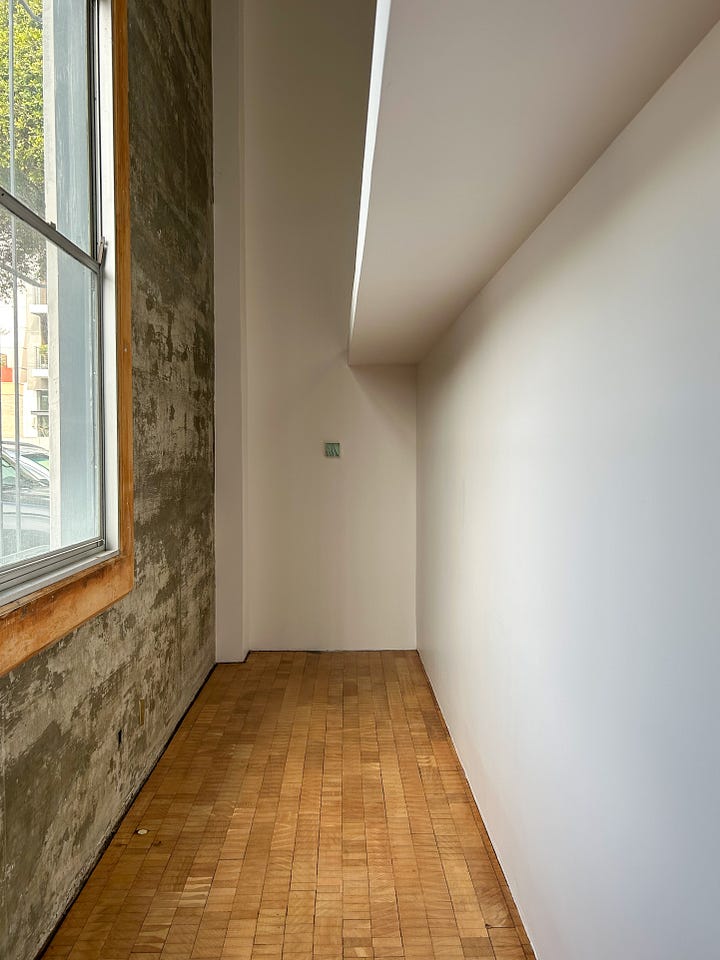
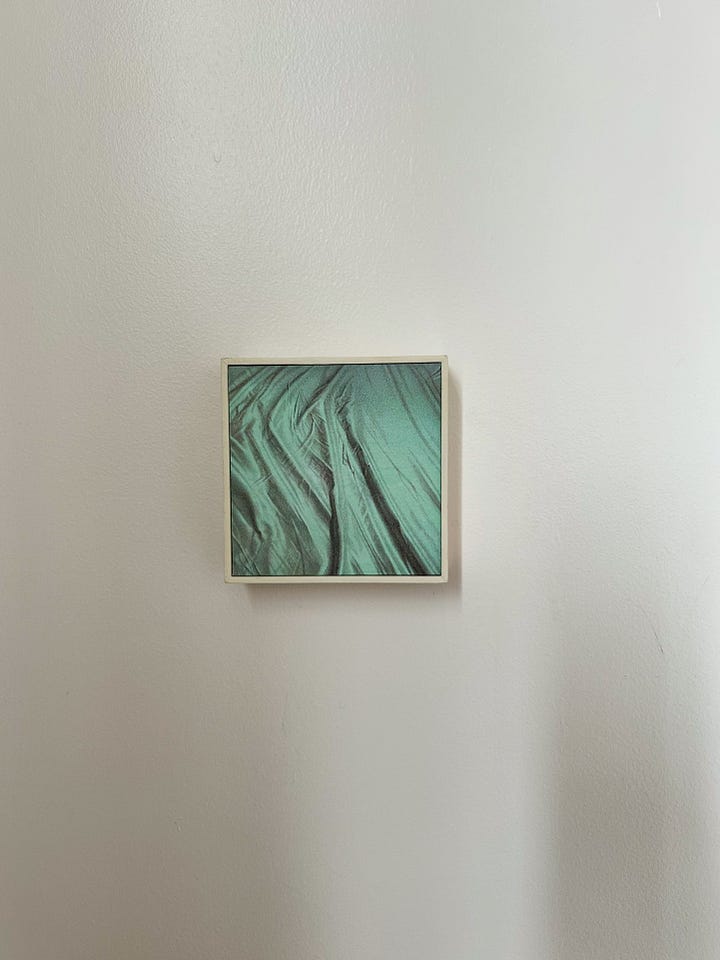


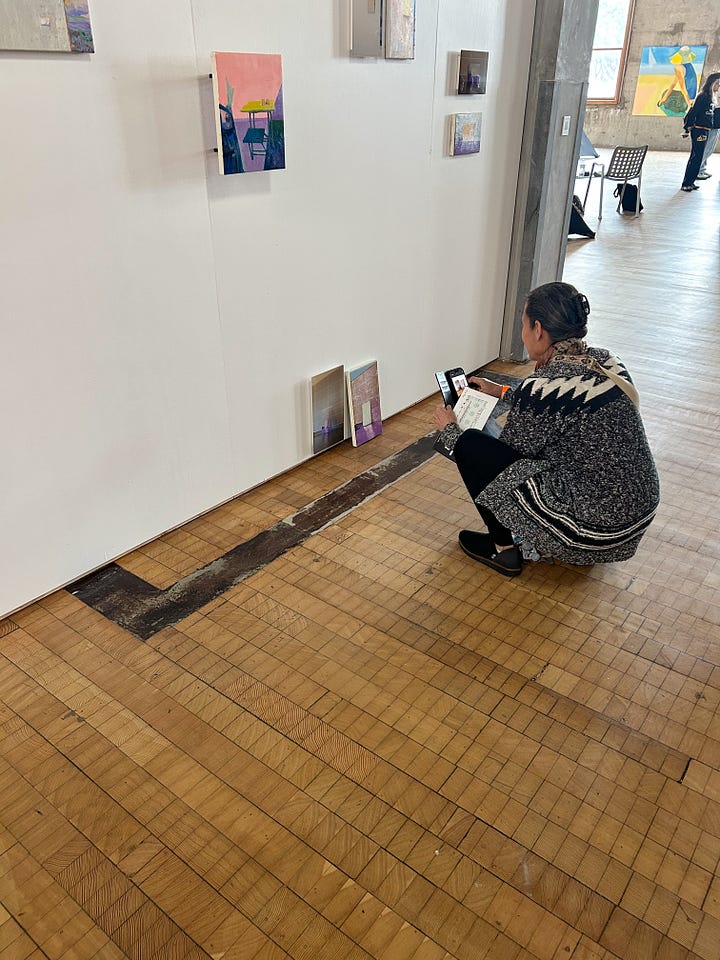
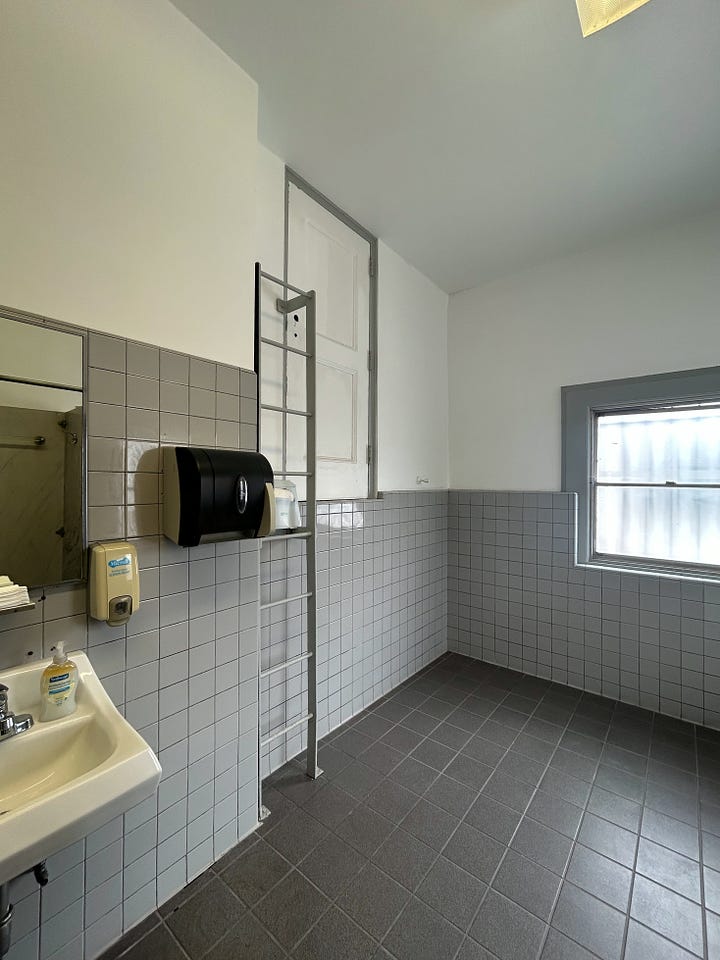
As we made our way around the space, we were quickly enraptured by an original post-office table full of obscure vintage books. Selected as carefully as the artworks themselves, The Untitled Love Bookshop of Echo Park greeted us enthusiastically, sharing books on everything from Ikebana to posters by Salvador Dali. Next door, Cruise Control Contemporary chatted with us about Orion Shepherd’s work: three sculptures, Dungeness Masters I, II, and III. The sculptures had been arranged many times the night before, until landing on a neatly spaced line in the center of the lobby. Each sculpture was a chest-high stack of bronze Dungeness crabs, which we were allowed to touch–something we might have thought twice about had we known that Shepherd regularly urinated on the works, even encouraging others to as well. The urination speeds up the oxidation process of the bronze, creating a pleasant teal hue that complements the floor of the post office well. The Dungeness crab is a recurring motif within Shepherd’s work, and these particular sculptures were made from shells Shepherd collected from a Bay Area beach.
In the main room, Alto Beta Gallery, a gallery formerly located in Altadena before it was destroyed in the Eaton Fire, caught our attention. There, Amy Sarkisian’s small, pristine paintings of album covers tricked us into thinking they were the real thing. Across the way at Good Weather Gallery, we chatted with the staff about Dylan Spaysky’s work: multi-layered sculptures made of mirrors, bolts, frames, and extension cords. Mythical castles and filmy firelight gleamed at specific angles, peeking out from behind two and three layers of picture frame glass. One staff worker told us that he owned a piece and that yes, it did make a fabulous lighting addition to his home since it contained four nightlights tucked neatly in a row. Spaysky’s piece, Fountain Mirror, rested unobtrusively on the floor, drops of water escaping periodically from a small fountain placed inside the baseball-shaped mirror frame.
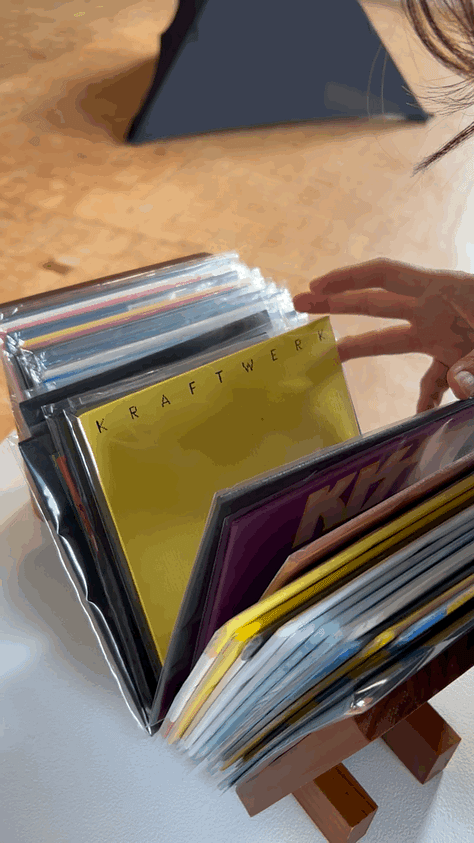

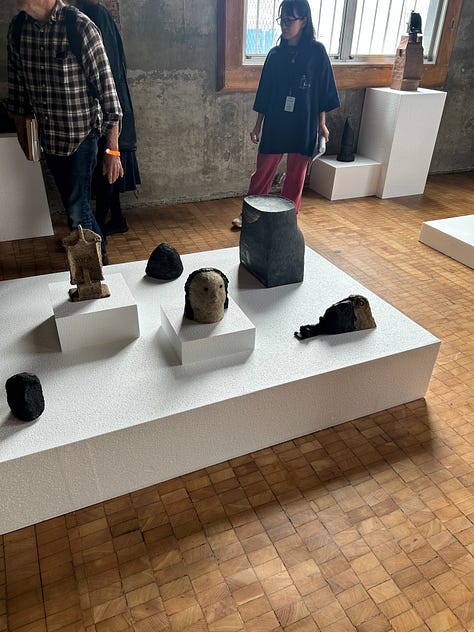
At Tomio Koyama Gallery, Japanese artist Keiji Ito’s ceramic sculptures seemed to defy the laws of science, as each heavy piece rested lightly on large pedestals made of Styrofoam. The staff were quick to pick the pieces up off of the ankle-height blocks, handling them confidently while they showed details to interested viewers. Tomio Koyama Gallery has been based in Tokyo since 1996, in contrast to many of the newer galleries in attendance at Post-Fair.
CASTLE occupied one of the most prominent spaces just inside the entrance to the fair. In their booth, we found eight paintings by Victor Boullet, which alternated between portraits of owls and portraits of John Cazale, an American actor who only appeared in five films during his lifetime, all of which were nominated for Best Picture. CASTLE encouraged us to go find their friends at House of Seiko. There we saw the figurative paintings of San Francisco-based artist Quintessa Matranga. Across from House of Seiko, was P·P·O·W, a veteran New York-based gallery, presenting the work of Harry Gould Harvey IV. His exceedingly intricate multi-media drawings were in the most gorgeous walnut frames ever seen, each one unique and carved with cathedral-like miniature towers and label plates made of pure silver. “SATUNINE NIGHT TELLS OF AN ANGEL,” colored pencil lettering declared, each of his four large-scale pieces replete with spirograph shapes, cherubs, and motifs from Duchampian chess theory or Shaker spirit drawings.


At every turn of Post-Fair, we were greeted by friendly gallerists more than happy to chat. In a world where art fairs can often feel hectic, if not entirely sterile and commercialized, Post-Fair offered a refreshing blend of down-to-earth people and exceedingly high-quality art, where gallerists could talk about the work joyfully with less pressure to sell or compete with each other. This was the vision creator Chris Sharp had for Post-Fair: like an indie flea or an open-air market, the atmosphere was giving, almost neighborly. Untitled Love sent us to Cruise Control, who sent us to CASTLE, who sent us to House of Seiko. Undoubtedly Post-Fair is what anyone would hope for from an art fair: a community of art-loving individuals working together to support each other, share resources, and promote artists.





